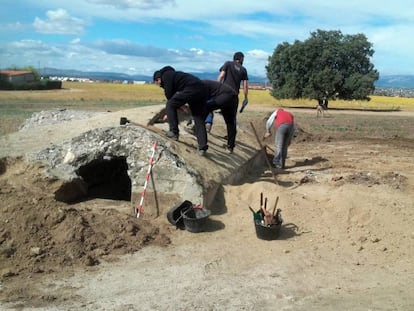Fitting Civil War photos into images of modern-day Madrid
A collection created by Sebastian Maharg mixes striking black-and-white images from the 1936-39 conflict with full-color pictures of their present-day locations
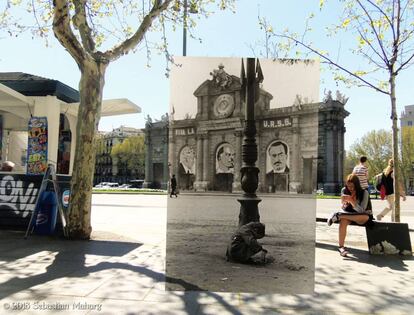
On March 28, 1939, after resisting for two-and-a-half years, Madrid succumbed to Francisco Franco’s troops. This period of the Spanish capital’s history was captured in many photographs, and now artist Sebastian Maharg has brought these images back to life in Pasado en Paralelo (The Past in Parallel), a collection that superimposes black-and-white photos from the Spanish Civil War on top of color images of their modern-day locations.
The idea behind the series is not a new one, and many other examples can be found on the internet. “With the 100th anniversary of the First World War, The Guardian published many before and after pictures of cities and people, and they struck me. Having seen many photos from the Spanish Civil War, I thought it would be interesting if someone did something similar for Madrid,” says Maharg. In 2014, he started by superimposing photographs over images from Google Street View. Five years later, he completed the project using his own pictures.
The photographs of the Civil War span from the beginning of the Francoist offensive on Madrid in 1939 to the end of the conflict. There are images of soldiers marching down the capital’s thoroughfare Gran Vía, trucks passing through Madrid’s central square, Puerta del Sol, and children looking at shrapnel in the Madrid neighborhood of Vallecas. “Above all, I looked for photos of common people, who showed the human side of what happened. With these montages, I try to merge elements so that the images came together subtly. This helps to link space and time, the parallel past,” Maharg explains to Verne via email.
Maharg says that the photographs came from the General Archive of the Civil War in Salamanca, the Delegate Board of Defense of Madrid and the National Library. About half of the photographs were taken from the websites of these institutions.
At the moment, Pasado en Paralelo features 52 photographs. Maharg wants to add to it ahead of this year’s 80th anniversary of the end of the Civil War. He also intends to bring the project to Barcelona and Seville. “I would like my montages to serve as a reminder that this all happened right here, much closer than we think. It’s easy to look at a black-and-white photograph and feel distant and even a little indifferent, but if it is introduced in a modern context, that we pass by every day, going shopping or for a drink ... then suddenly it comes alive, it captures the imagination. You become part of history.”
Maharg was born in Chicago, but spent all of his summers in Spain because his mother is from Salamanca, a city in northwestern Spain. When he was 22, he moved to Madrid. Now he is 44 and works as a translator and screenwriter. “Like many Spaniards, the Civil War is close to me. My maternal grandfather fought with the rebels and was killed in battle in January 1939. It’s been almost 80 years. My interest was also born as a result of the lack of interest in the conflict,” he says.
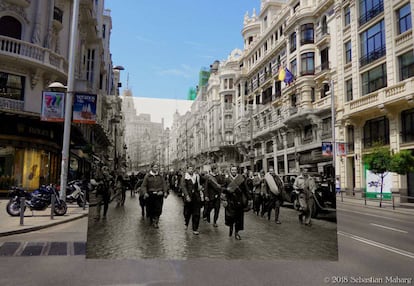
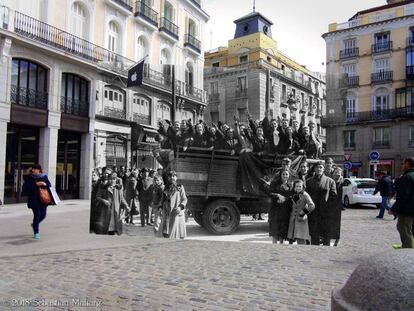

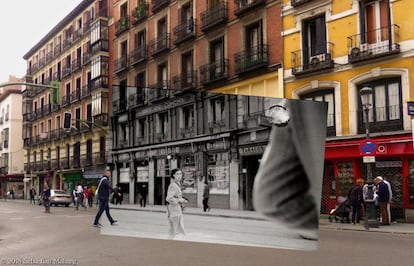
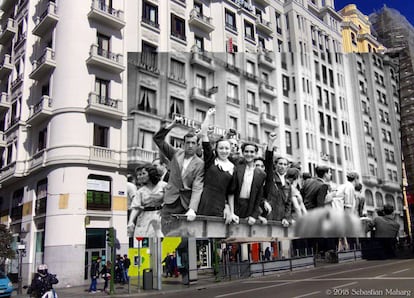
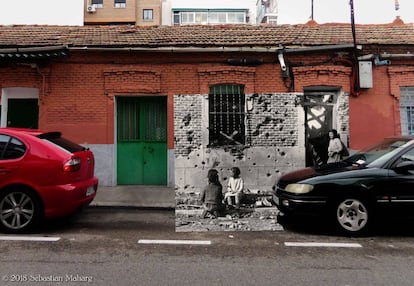
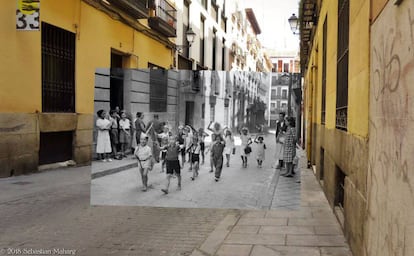

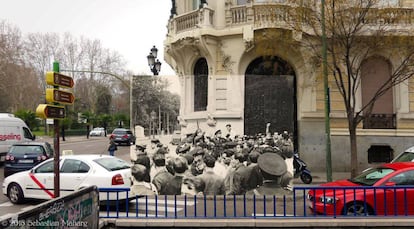


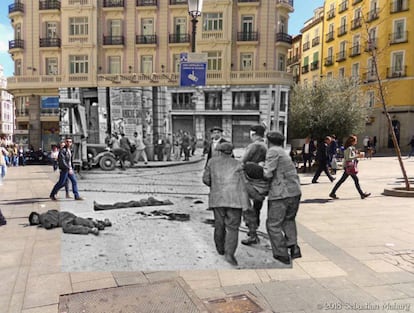
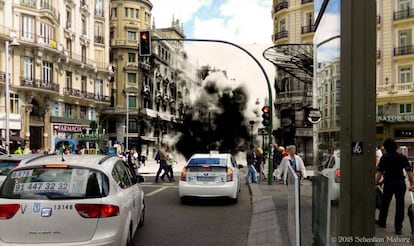
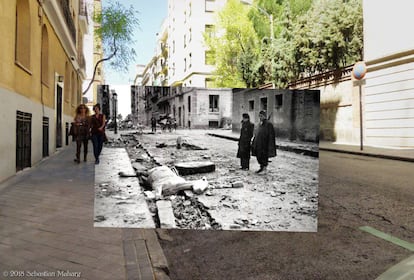
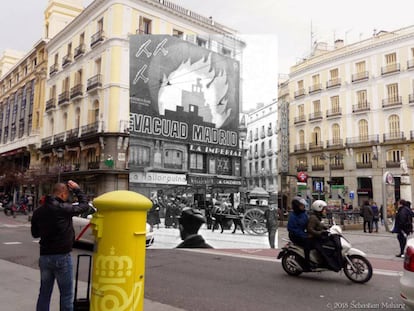
English version by Asia London Palomba.
Tu suscripción se está usando en otro dispositivo
¿Quieres añadir otro usuario a tu suscripción?
Si continúas leyendo en este dispositivo, no se podrá leer en el otro.
FlechaTu suscripción se está usando en otro dispositivo y solo puedes acceder a EL PAÍS desde un dispositivo a la vez.
Si quieres compartir tu cuenta, cambia tu suscripción a la modalidad Premium, así podrás añadir otro usuario. Cada uno accederá con su propia cuenta de email, lo que os permitirá personalizar vuestra experiencia en EL PAÍS.
¿Tienes una suscripción de empresa? Accede aquí para contratar más cuentas.
En el caso de no saber quién está usando tu cuenta, te recomendamos cambiar tu contraseña aquí.
Si decides continuar compartiendo tu cuenta, este mensaje se mostrará en tu dispositivo y en el de la otra persona que está usando tu cuenta de forma indefinida, afectando a tu experiencia de lectura. Puedes consultar aquí los términos y condiciones de la suscripción digital.
More information
Archived In
Últimas noticias
Most viewed
- Sinaloa Cartel war is taking its toll on Los Chapitos
- Oona Chaplin: ‘I told James Cameron that I was living in a treehouse and starting a permaculture project with a friend’
- Reinhard Genzel, Nobel laureate in physics: ‘One-minute videos will never give you the truth’
- Why the price of coffee has skyrocketed: from Brazilian plantations to specialty coffee houses
- Silver prices are going crazy: This is what’s fueling the rally


